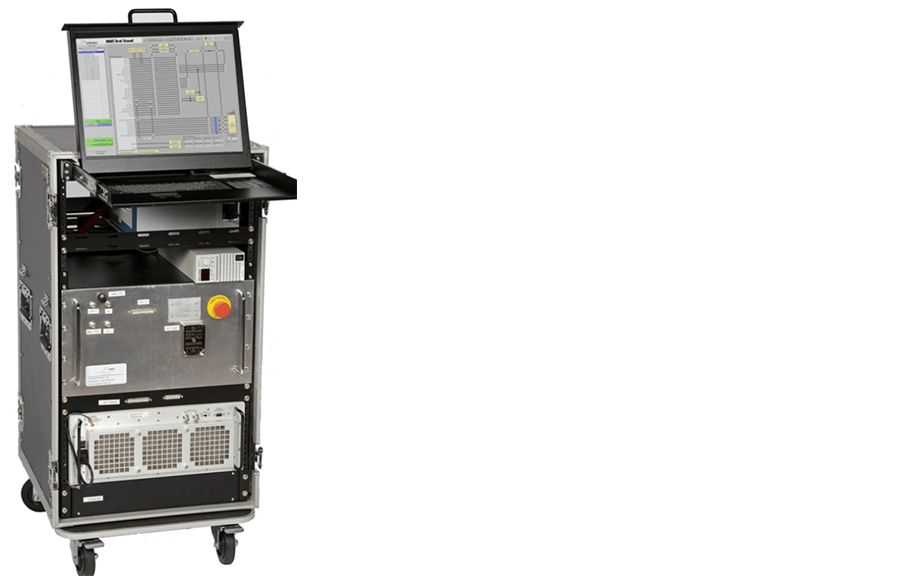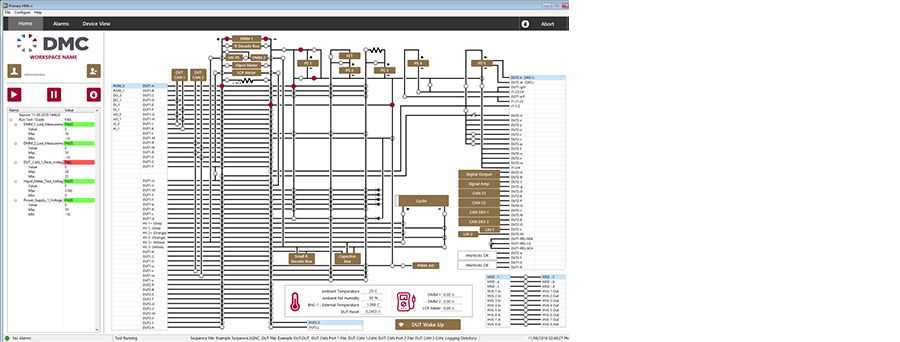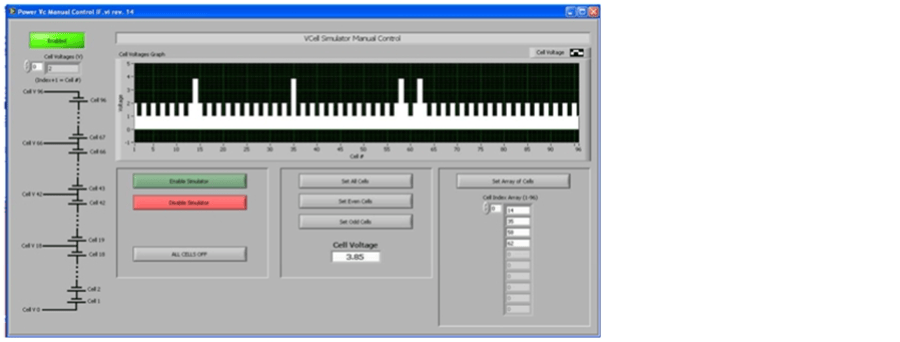This BMS test system was built using DMC’s modular Battery Test Platform, incorporating proven software and hardware architectures, along with flexible and reliable subsystem components and instruments, to produce a BMS test stand completely customized to the end users' specifications.

DMS Test Stand
The DMC Battery Test Platform is built around high quality off-the-shelf hardware assembled from a variety of vendors, including National Instruments (NI), Pickering Interfaces, Lambda, and Agilent, among others. Selection of individual instruments in the DMC system is based completely on required performance, not allegiance to a single hardware vendor. This strict attention to specifications and performance provides DMC battery test system users with nothing less than best in class performance.
Battery Stack Simulator
Aside from the core system components listed above, the BMS test stand produced by DMC required integration of a major hardware assembly which can simulate the series stack of approximately 100 Li-ion cells comprising the actual battery connected to the BMS. Adding this functionality allows users to simulate nominal, out of norm, and worst-case battery stack conditions, which could not be produced repeatedly, reliably, or safely with a normal chemical battery cell.
Slack Simulator Manual Interface
The physical requirements for the battery stack simulator are:
- System of approximately 100 individual cell simulators
- Each cell simulator connected in series, to produce a full pack voltage
- Each cell voltage adjustable from 0 to 7V, in 1 mV increments
- Each cell independently capable of both 200 mA source, and 100 mA sink operation
- Entire stack isolated from ground to 750 VDC
- Entire system must have a fully featured safety interlock system
Along with these physical criteria, cost, reliability, serviceability, and accuracy were also critical to the stack simulator design.
DMC engaged Pickering Interfaces, a well-known international PXI hardware vendor, to supply an off-the-shelf PXI card which could simulate 6 battery cells, while meeting all of the requirements listed above. The result of this direct vendor collaboration is Pickering's newly released 41-752-001: 6-channel PXI battery cell simulator module.
By chaining several of the Pickering battery simulator cards together in a second PXI chassis using a custom PCB routing board, a completely adjustable battery stack simulator was realized in a standard 4U rack space. Moreover, each cell voltage is independently adjustable and capable of independent voltage regulation under current load and source conditions, meeting end user requirements for simulation of the battery stack under cell balancing circuit operations.

User Interface
Pickering PXI relay cards were also used to route battery stack voltage outputs through a multiplexing system through NI DMM cards, to the BMS. This allows the system to measure live waveform captures of currents and voltages produced by the stack under varying BMS conditions. As a result, end users gained unique and valuable insights into the real world operation of their BMS system.
For more information on EV Battery Pack and BMS Testing see this DMC White Paper.